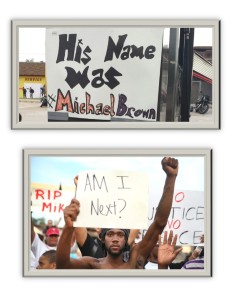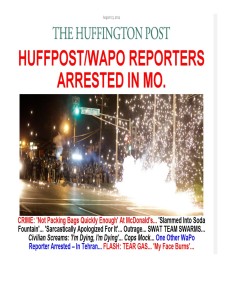In a writing class I take at the Ferguson Writers at the East Harlem Tutorial Program, we discuss a number of social issues. The most current topics we discuss concern recent events in Ferguson, Missouri. Not too long ago, the streets of Ferguson filled with protesters and activists from all walks of life, fighting for justice against the unwarranted police officer killing an unarmed 18 year-old, Michael Brown.
Darren Wilson, the officer accused of the murder, claimed that Brown and a friend had just robbed a grocery store. He further claimed that Brown was reaching for a weapon, which was why Wilson shot him six times and left Brown’s body in the street. The officer then proceeded to block all public access to his body, leaving the teen bleeding in the street for four hours before allowing anyone to come help him.
Wilson’s claim as to what the teen was doing prior to the shooting was proven to be false by testimony from the actual grocery store owner. Yet Wilson still faced little to no consequences for using lethal force against Brown. Crowds protesting against Officer Wilson’s actions were met with a heavily militarized response from the local police department, involving the use of tear gas, armored vehicles, automatic weapons and riot gear. This response only helped fuel citizen outrage against the Ferguson Police Department; but perhaps more importantly, it also generated feelings of political unity among the civilian population of Ferguson, especially the town’s black citizens.
The situation in Ferguson is often called “The Untold Story” for a good reason. Media portrayal is crucial in how everyone outside of Ferguson sees the relationship between the town’s police department and the public they are sworn to protect. But the media sometimes doesn’t discover the entire truth, or alters the truth with superficial or biased reporting that tells only one side of the story. Media that is not scrupulously unbiased may also be tempted to report whatever unproven facts they are offered by powerful special interest groups (like the police).
Most of what the nation currently hears about Ferguson is that people are protesting over racial issues and associated police brutality, but far more than that is going on. The “untold” part of what’s happening in Ferguson is that it’s a story about a community striving to unite and secure its collective welfare and protection. There have been under-publicized accounts of people protecting stores from being looted, donating to local food pantries and offering rides and shelter to independent reporters. In one specific incident, a reporter for the Huffington Post was trying to reach her partner at a police station, when suddenly officers began launching tear gas into the street. She fled into an unfamiliar part of the neighborhood and was met with nothing but kindness. The people she encountered gave her protective gear to help get through the tear gas, and expressed gratitude for the fact that she was honestly trying to observe and share their story.
Unfortunately, what attracted the most coverage from mainstream media during this time were the unsubstantiated allegations made by Officer Wilson in an attempt to rationalize his actions and vilify the protesters. Various news channels and websites rushed to release pictures and rumors calculated to make Mike Brown look like a gang banger. However, almost none of those same news channels or websites investigated further or corrected their initial reports after those first incriminating pictures were proven to be false.
Although Ferguson’s racial issues and street protests are an essential part of this news story, these two things do not entirely encompass the social significance of these events. The progressive community spirit of the protesters has reached beyond the streets of Ferguson. There have been spontaneous eruptions of out-of-state support including a teacher from North Carolina providing school lunches for the students of Ferguson, and the Wisconsin Hope Lab providing secured scholarships for the Brown family.
Don’t let one-sided media portrayals fool you about what may actually be going on in the world. These days it seems as if the American public is too lazy to question all sides of any issue or controversy. We should all want to weigh every different perspective fairly before passing judgment. We should be willing to listen equally to Republican and Democrat, Catholic and Atheist, conservatives and radicals. Instead things have reached the point where most of us form our political opinions based on information gotten from a single media outlet, with no further independent thought or research. How else could the murder of an innocent teen be so easily justified in the general public’s eye by false claims and a few suspicious pictures that portrayed the victim as a thug?
Sound “bites” on radio and television are too short to educate listeners completely about complicated situations. Despite their company motto, 1010 WINS in New York cannot “give you the world” in 42 minutes. Thus, if we know that information provided through the nation’s most popular television and radio stations can sometimes be incomplete or unreliable, it becomes more important than ever for us to do our own news gathering by paying attention to multiple media outlets. Go out of your way to compare news sources that have opposing views. Spend one day watching BBC World News and the next watching Fox News and the next watching CNN or VICE News. As important as it is to pay attention to what’s going on in our society, it is even more important to realize that no single newspaper, magazine, or electronic news source can be guaranteed to be completely accurate or unbiased when it comes to reporting the whole truth.

